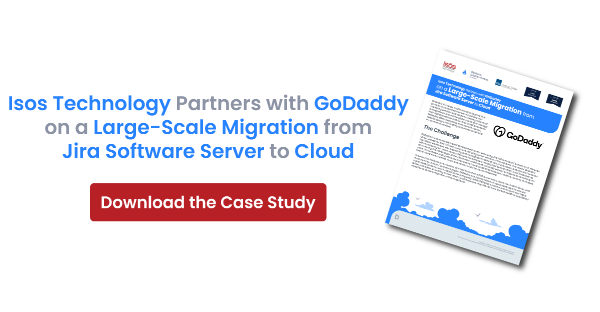 With support for Atlassian Server ending on February 14, 2024, more companies than ever are planning to migrate to Atlassian Cloud. And it’s not just Server – with the way Atlassian has been investing in and advancing Cloud, Data Center users are making the leap, too. At Isos Technology, when we talk to people about migrating, we get a lot of questions about cost. Since every company is so different, we make it a practice to provide a Total Cost of Ownership Analysis as part of our estimation process. It’s our way of helping you gauge what your expenses related to Atlassian may be for the first few years after the migration and when you might begin realizing a return on your investment.
With support for Atlassian Server ending on February 14, 2024, more companies than ever are planning to migrate to Atlassian Cloud. And it’s not just Server – with the way Atlassian has been investing in and advancing Cloud, Data Center users are making the leap, too. At Isos Technology, when we talk to people about migrating, we get a lot of questions about cost. Since every company is so different, we make it a practice to provide a Total Cost of Ownership Analysis as part of our estimation process. It’s our way of helping you gauge what your expenses related to Atlassian may be for the first few years after the migration and when you might begin realizing a return on your investment.
Here are four ways companies often save when migrating to Atlassian Cloud:
1. Reduced Software and Software Licensing Fees
Organizations making the move to Atlassian Cloud may see savings related to software and software licensing fees for several reasons. First, cleaning up your instance is a precursor to migration, and in doing so, duplicate and/or obsolete licenses can be eliminated. In addition, switching to Atlassian Access streamlines user management processes and provides better visibility, so you can more closely manage user seats.
Similarly, clean-up and migration efforts often mean you can consolidate third-party Marketplace apps. You may be paying for obsolete apps and/or multiple departments may be using similar apps that serve the same function that can be consolidated. Another thing – Atlassian Cloud also offers native functionality that may minimize the need for some third-party apps altogether.
2. Reduced Hardware and Hardware Management Costs
Companies that migrate to Atlassian Cloud often benefit from decommissioning obsolete servers and from the reduction in labor needed to maintain and upgrade them. This is particularly true if your systems have become cluttered with obsolete projects, data, apps, etc., and you’ve tried to solve performance issues by upgrading hardware.
3. Admin Costs
Companies that migrate to Atlassian Cloud often find that the overall, day-to-day management of the software and users is streamlined and that new automation capabilities significantly reduce the burden on admins. That means they can reduce admin staff and/or redirect them toward more value-added tasks tackling projects that have previously been postponed due to resource constraints.
4. Increased Productivity
Tool admin isn’t the only place you are likely to see productivity increases when migrating to Atlassian Cloud, although the benefits may or may not be quantifiable. Users across your company are likely to find processes streamlined, due to things like consolidation of apps, and improved native functionality and automation in the Cloud. With the system running better and people working more efficiently, many companies see a decrease in the number of tickets and issues, faster resolution time, and less overall downtime.
To learn more about migrating to Atlassian Cloud Contact Us Today!
Sign up to receive more great content
Learn more about Atlassian and how Isos can help by signing up to receive our latest blogs, eBooks, whitepapers and more.














